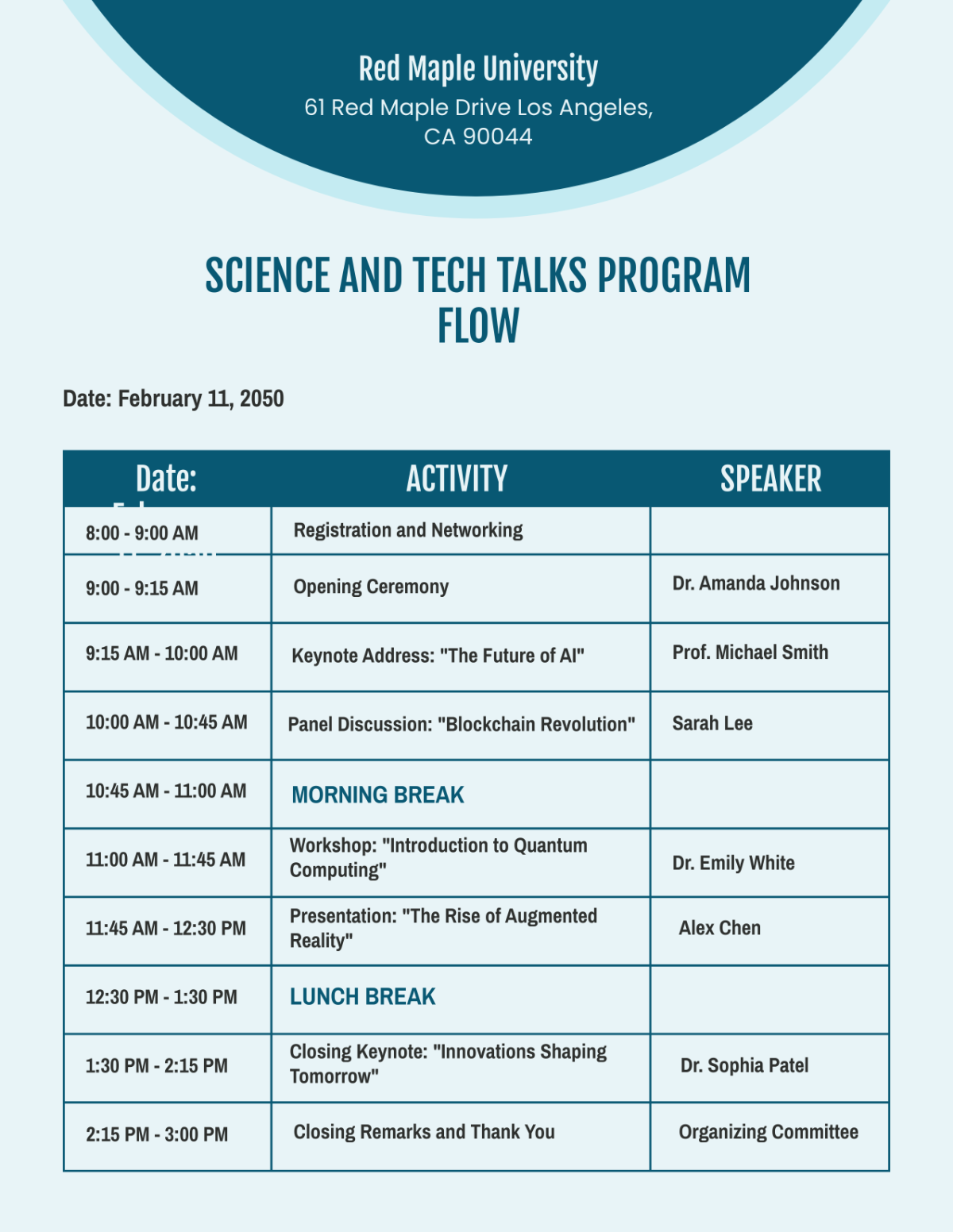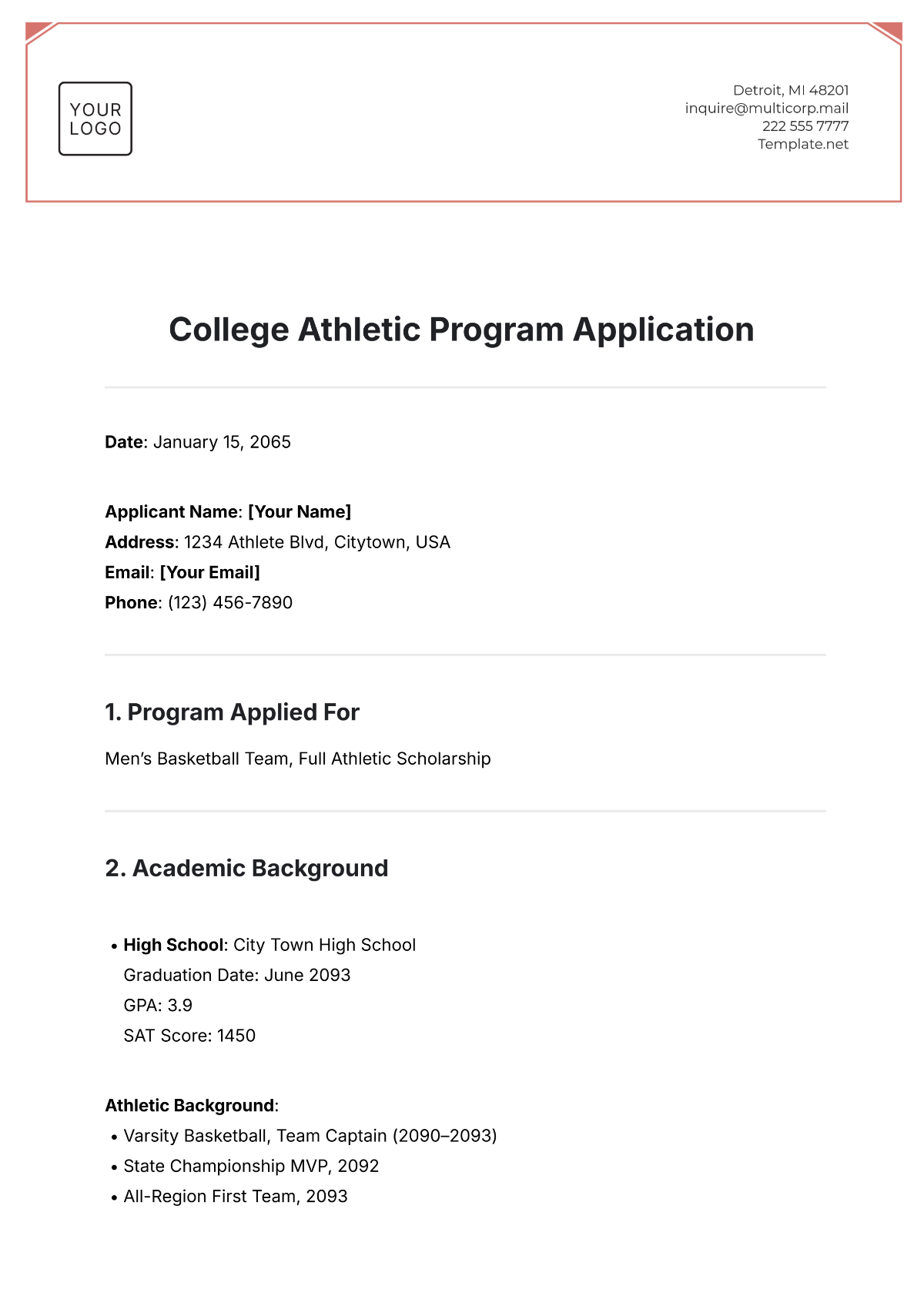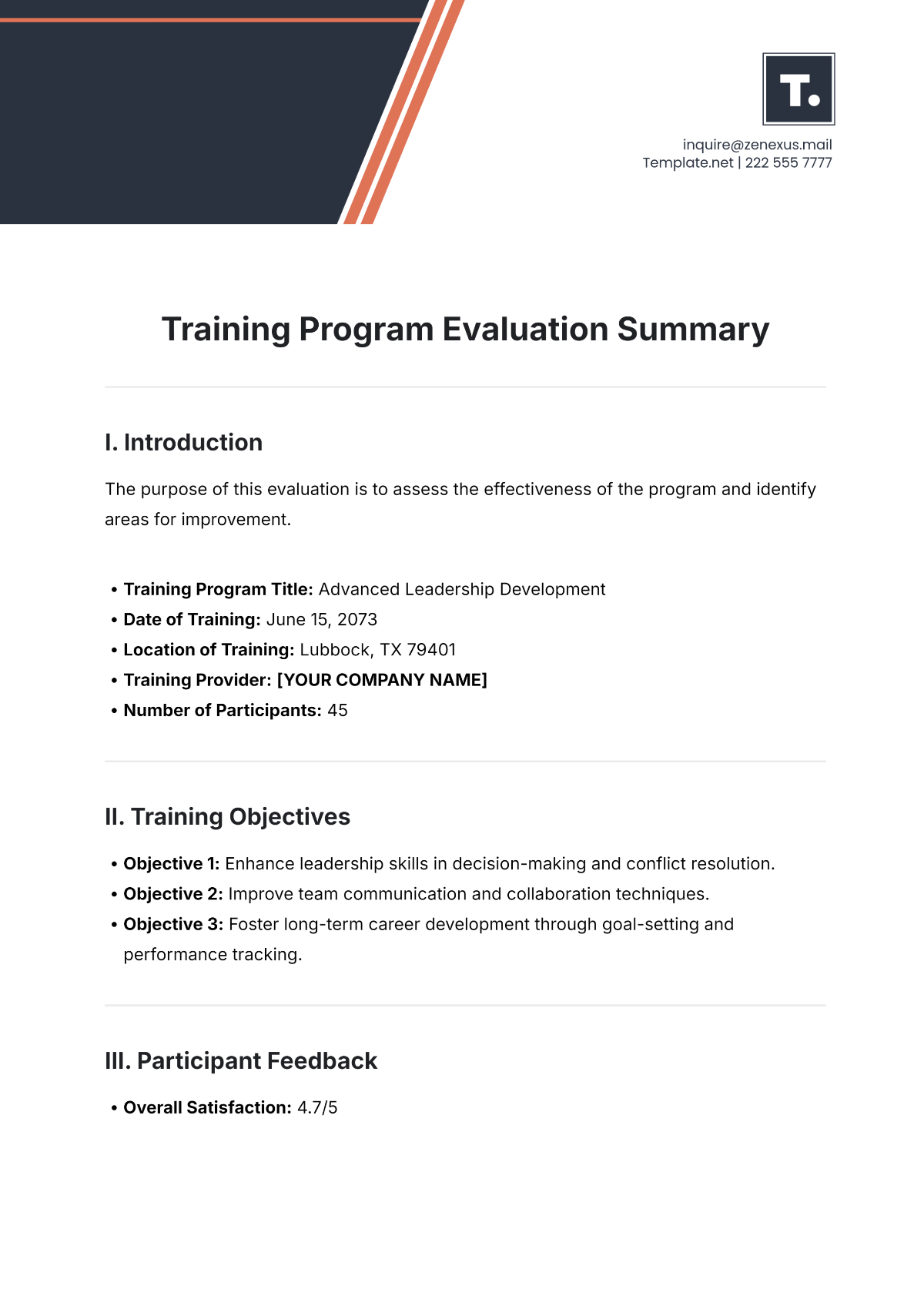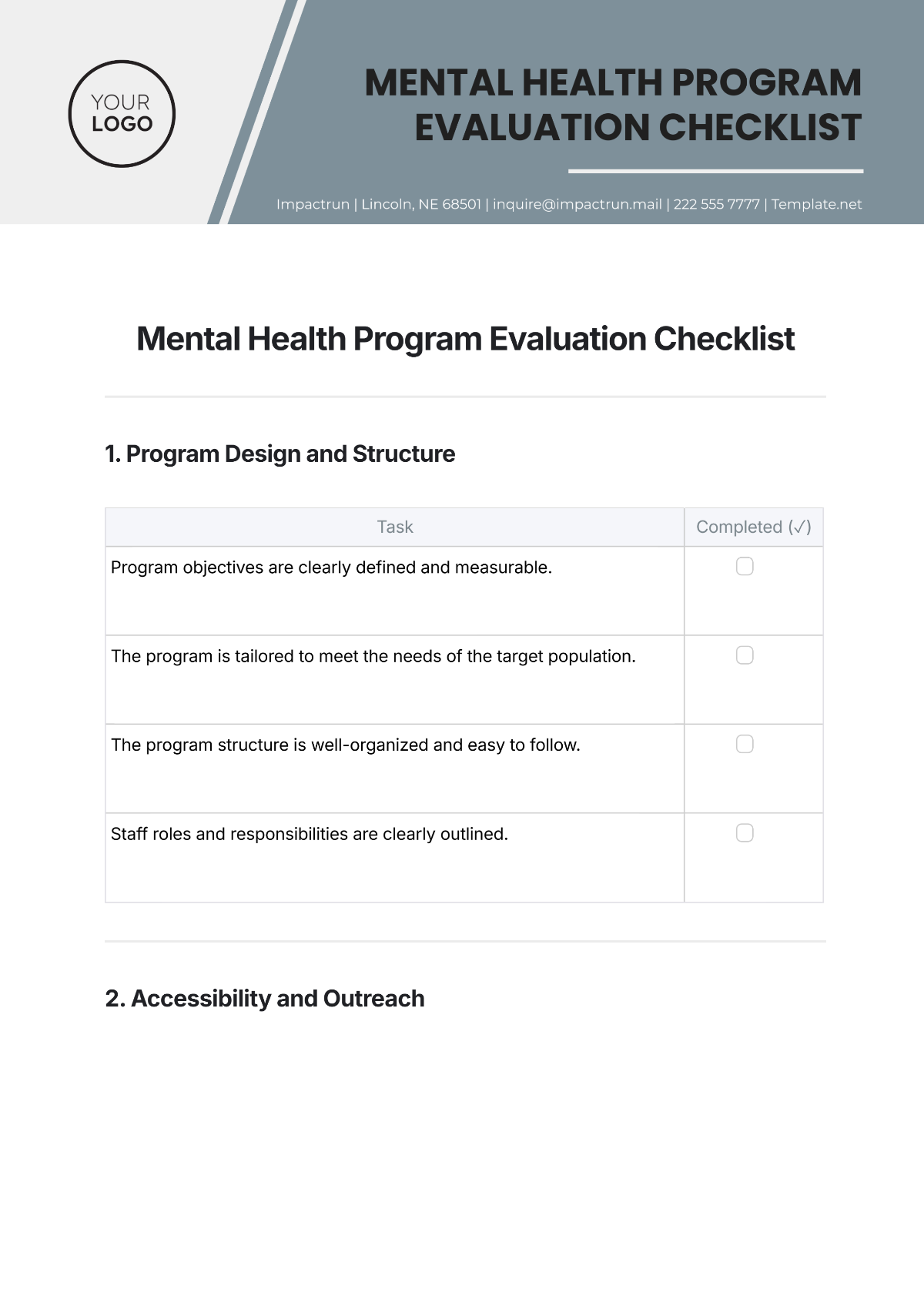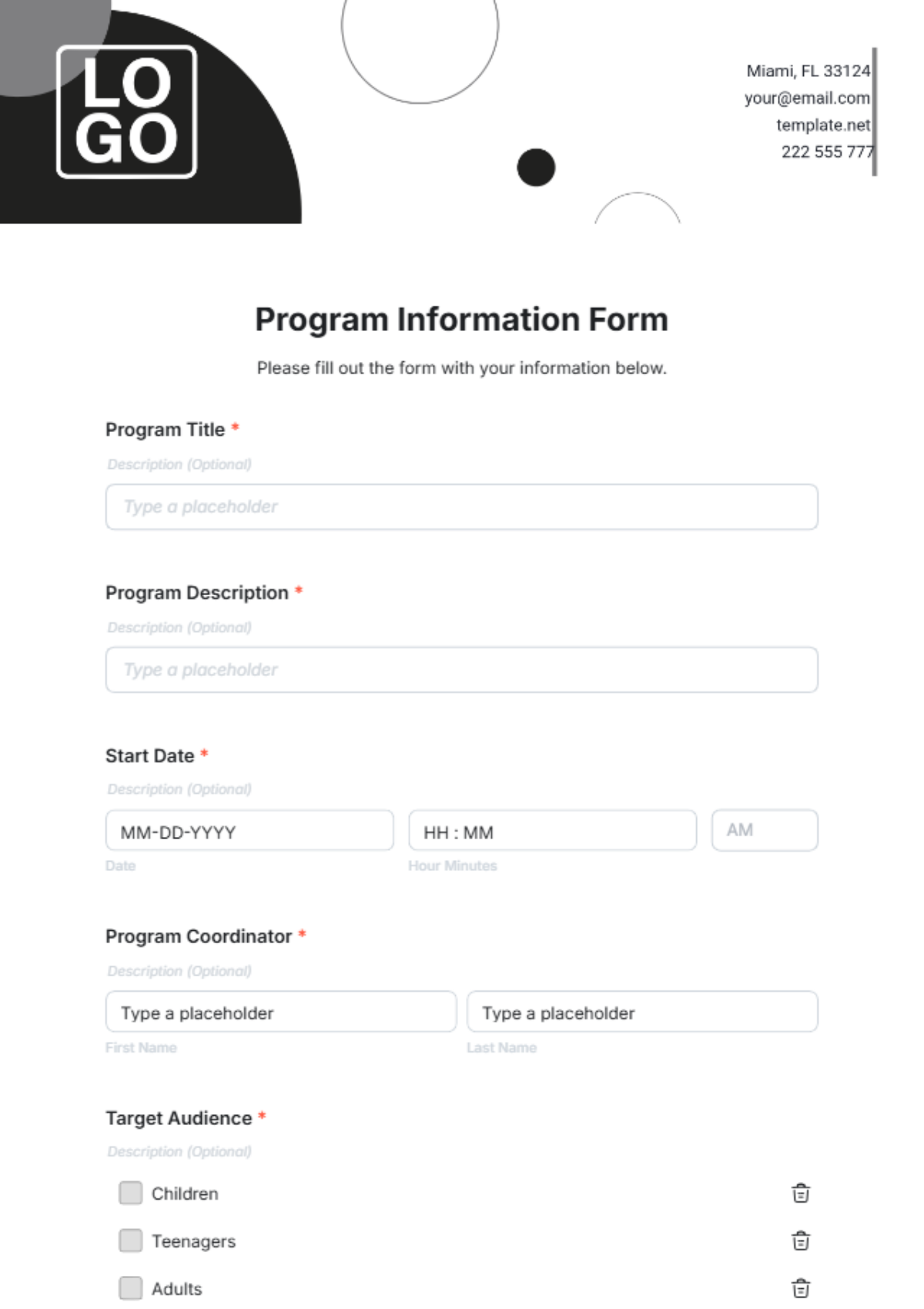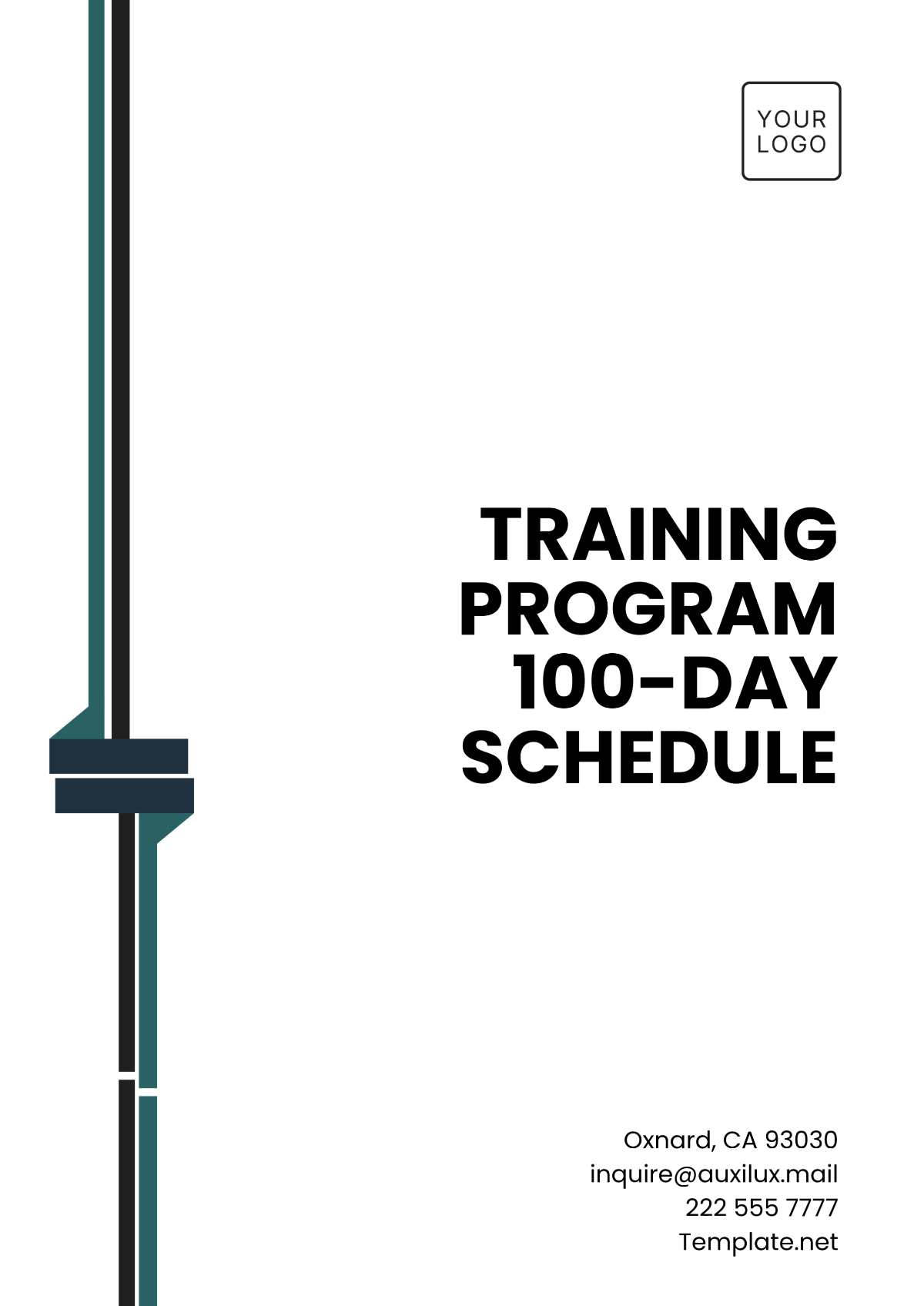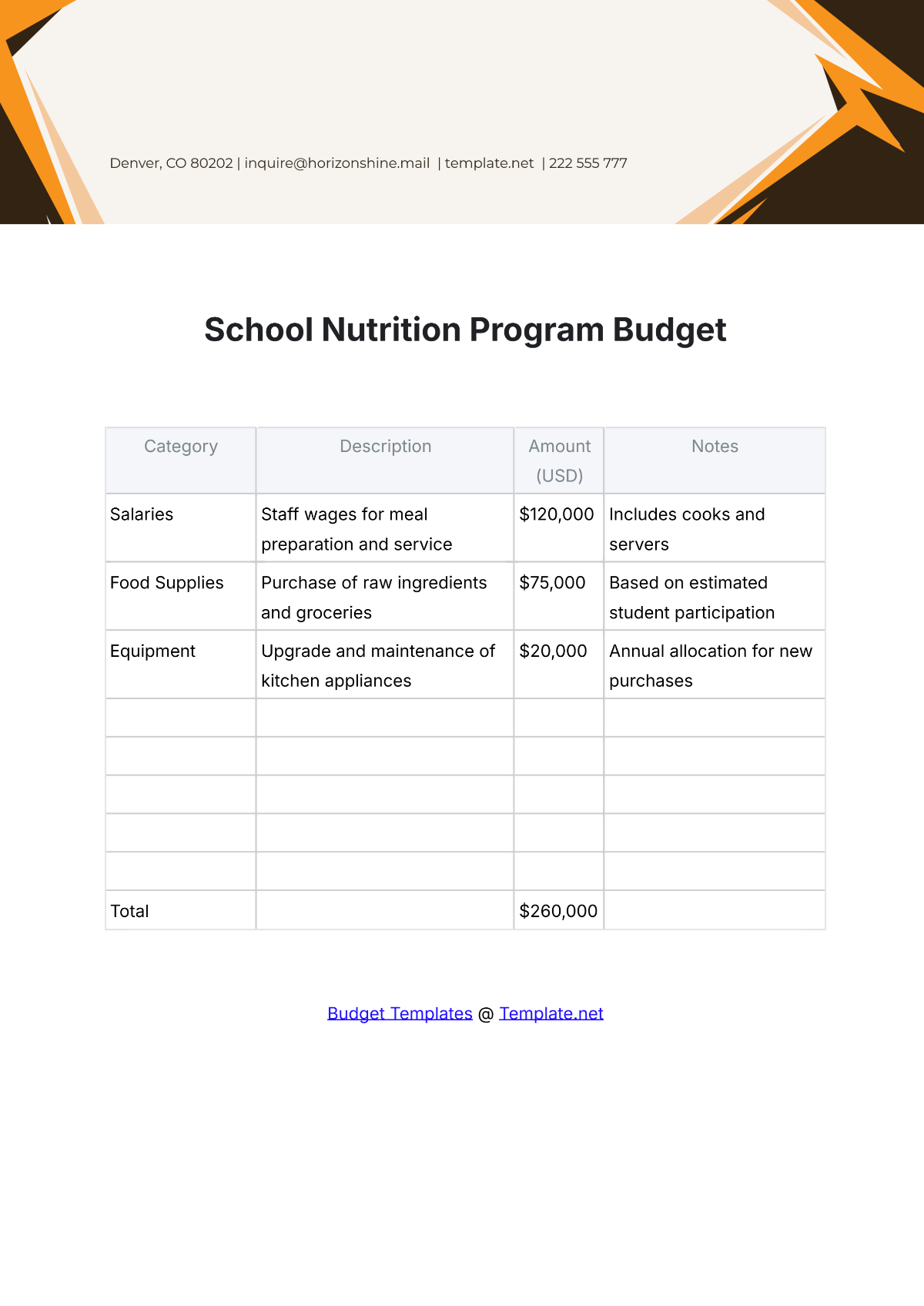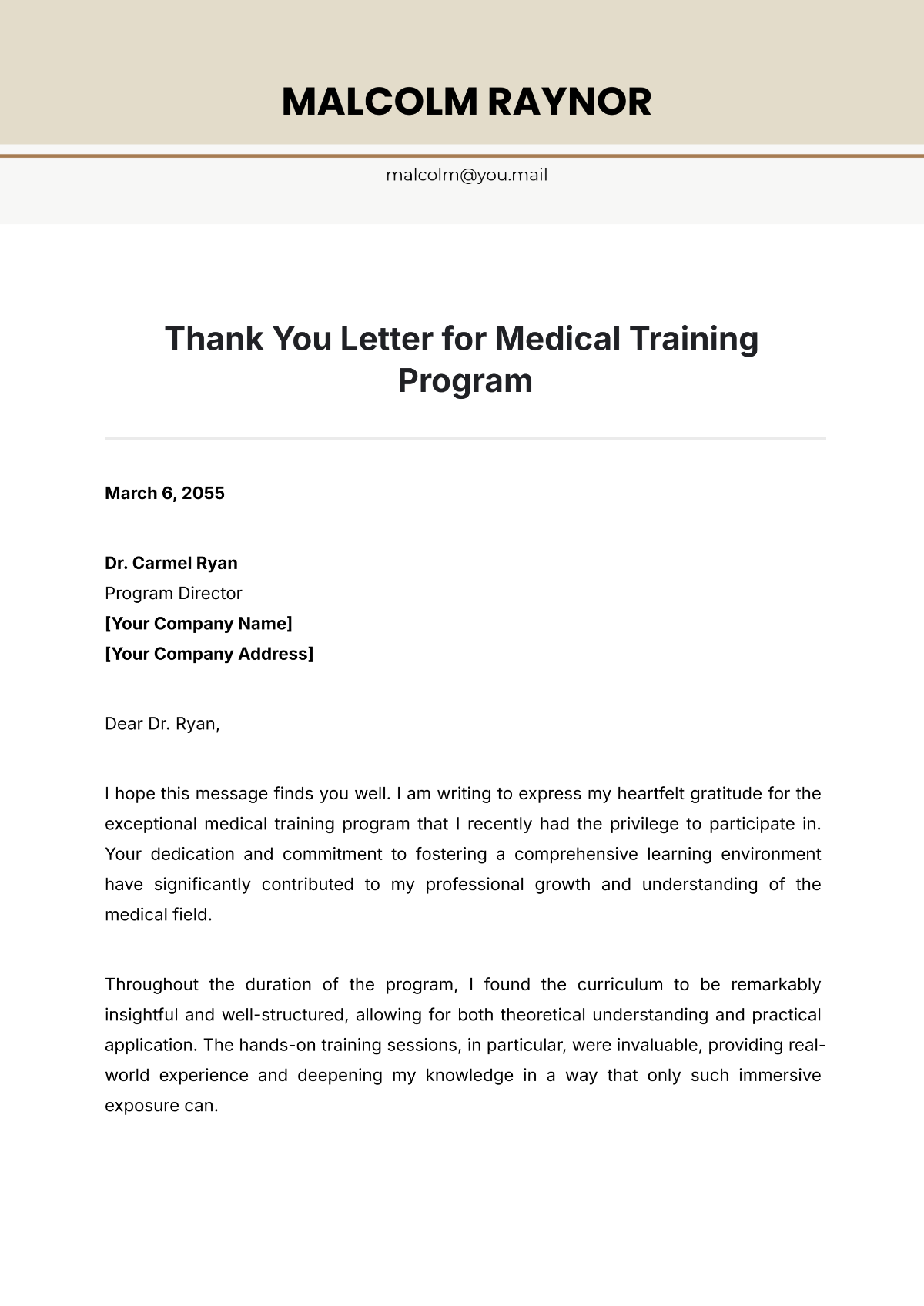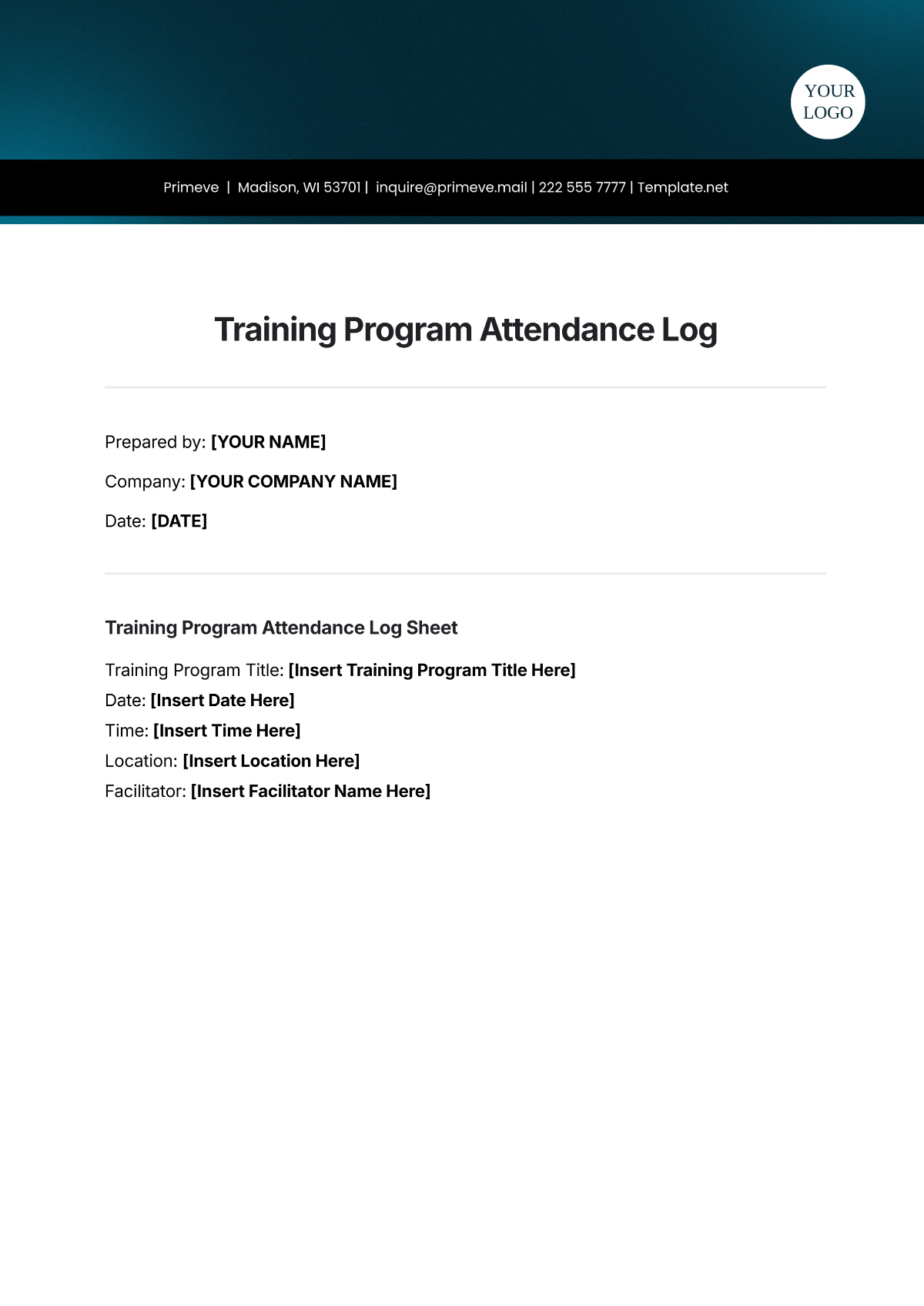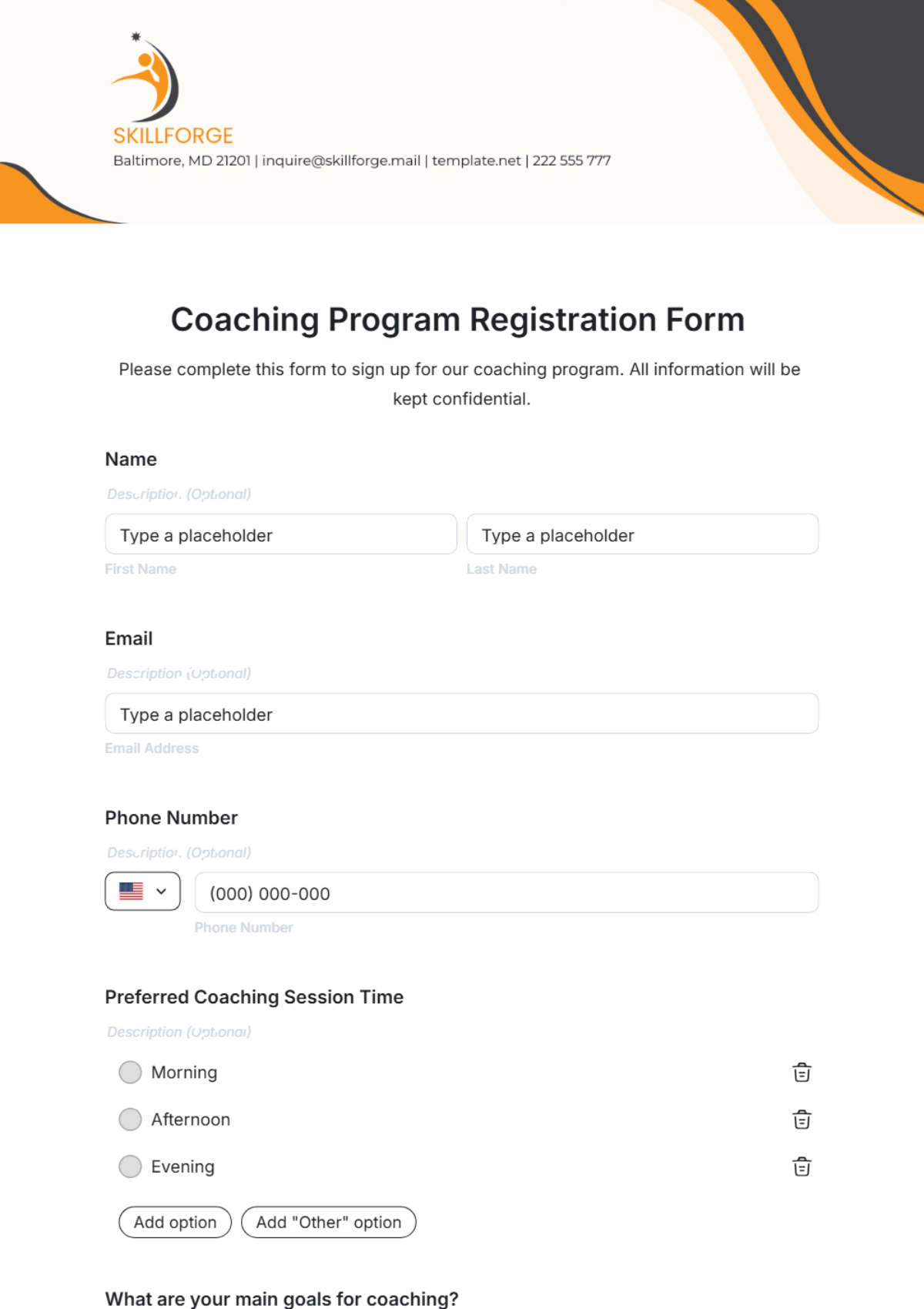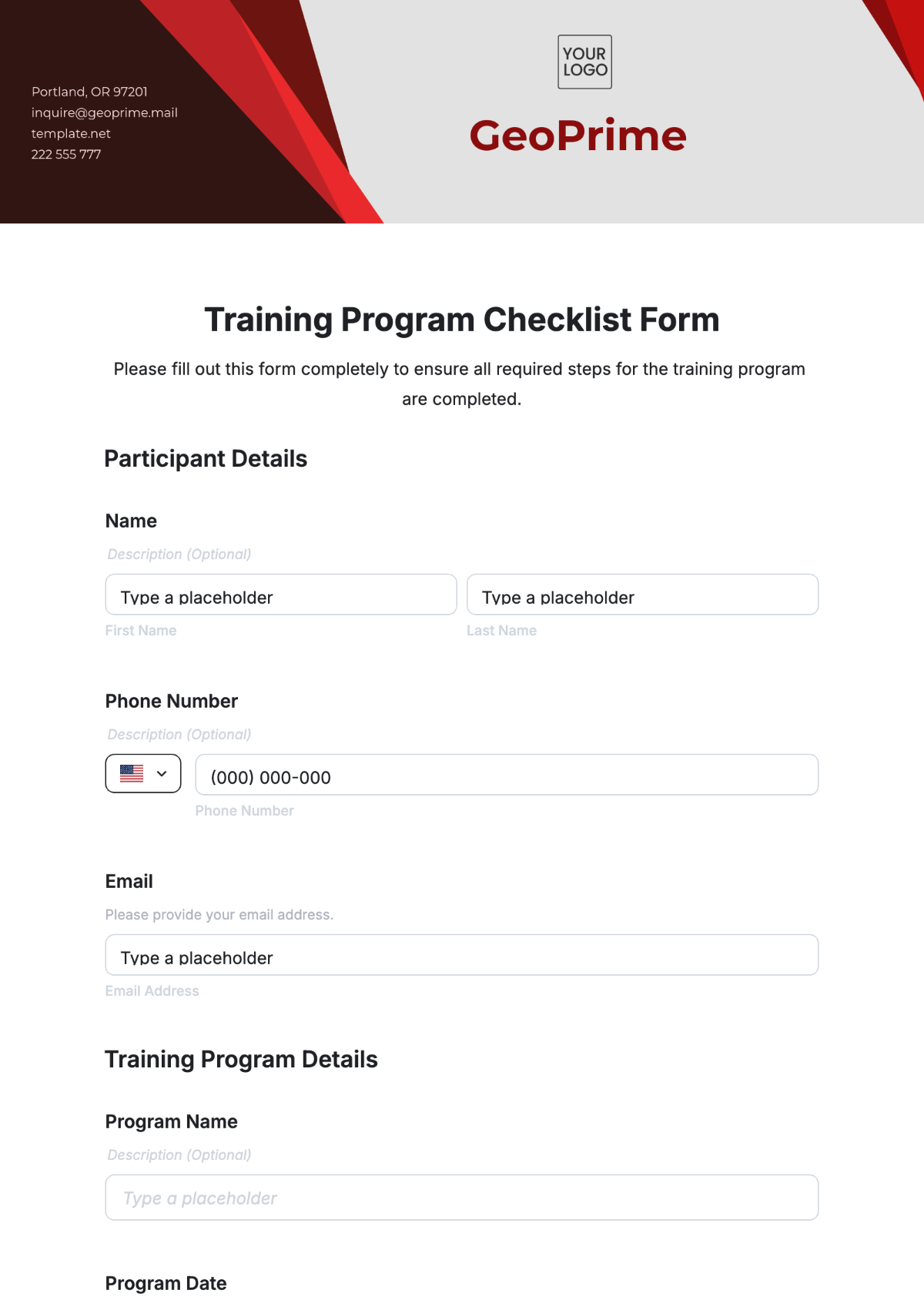Free Health & Safety Training Program Evaluation Study Template
Health & Safety Training Program
Evaluation Study
I. Introduction
[Your Company Name] is committed to maintaining the highest standards of occupational health and safety, not only to comply with the stringent requirements of [US law] but also to safeguard the well-being of our employees.
This Health & Safety Training Program Evaluation Study is designed to assess the effectiveness of our training programs, identify areas for improvement, and align our practices with the latest US health and safety standards. In this study, we will delve into key aspects of our training initiatives, compliance measures, and their impact on our employees' safety and well-being.
II. Program Description
We have established a robust Health & Safety Training Program aimed at fostering a culture of safety and compliance among our employees. This program is meticulously designed to align with the stringent standards and regulations set forth by US law, ensuring that our workforce operates in a safe and secure environment.
Our Health & Safety Training Program encompasses a wide array of topics, including hazard identification, emergency response protocols, safe work practices, and compliance with industry-specific regulations. This program employs various instructional methods, such as workshops, online courses, hands-on training, and simulations, to cater to diverse learning styles and preferences.
By equipping our employees with the knowledge and skills necessary to mitigate risks and respond effectively to health and safety challenges, we are committed to reducing workplace incidents and enhancing the overall well-being of our workforce. In this evaluation study, we will critically assess the effectiveness of our training initiatives, ensuring that they remain in alignment with evolving US health and safety standards.
III. Evaluation Objectives and Questions
In this section, we outline the key objectives and questions that underpin our Health & Safety Training Program Evaluation Study. These objectives are designed to assess the program's effectiveness, identify training gaps, and measure employee satisfaction. The following objectives and questions will guide our comprehensive evaluation:
Evaluation Objectives
Assess Program Effectiveness: Determine the overall effectiveness of our Health & Safety Training Program in reducing workplace incidents and promoting safety awareness.
Identify Training Gaps: Identify specific areas within the training program that may require improvement or modification to better meet US health and safety standards.
Measure Employee Satisfaction: Gauge employee satisfaction with the training program and its relevance to their daily tasks and responsibilities.
Evaluation Questions
A. Effectiveness Assessment
How has our Health & Safety Training Program contributed to a reduction in workplace incidents?
Have employees demonstrated improved safety awareness and compliance with established procedures after completing the training?
What measurable outcomes can be attributed to the program in terms of incident reduction and hazard mitigation?
B. Training Gap Identification
Are there any specific modules or topics within the training program that employees find challenging or less effective?
Are there emerging health and safety regulations or best practices that should be incorporated into our training to enhance compliance?
Do employees feel adequately prepared to handle unique safety challenges within their roles, such as specific machinery or equipment?
C. Employee Satisfaction Measurement
How do employees perceive the relevance and usefulness of the Health & Safety Training Program in their day-to-day work?
Are employees satisfied with the delivery methods and materials used in the training program?
What suggestions or feedback do employees have for improving the training experience and content?
IV. Methodology
In this section, we describe the methodology employed in conducting our Health & Safety Training Program Evaluation Study. Our approach encompasses various research methods and data sources to ensure a comprehensive assessment.
Methodology Components
Data Collection:
We will gather quantitative and qualitative data through surveys, assessments, and interviews with employees and trainers
Document Review:
A thorough review of training materials, incident reports, and regulatory documents will be conducted.
Comparative Analysis:
We will compare our program against industry benchmarks and best practices.
Observation:
Direct observations of training sessions and workplace practices will be undertaken.
Feedback Analysis:
Analysis of employee feedback and suggestions collected during the evaluation process.
Statistical Analysis:
Utilization of statistical tools to measure the impact of training on incident reduction and employee satisfaction.
V. Data Collection
In this section, we detail the comprehensive process of gathering critical data to evaluate the effectiveness of our Health & Safety Training Program. This rigorous approach ensures that our evaluation study is based on accurate and relevant information.
Data Collection Components
Surveys and Questionnaires:
Anonymous surveys will be distributed to employees to gather their feedback, perceptions, and suggestions regarding the training program.
Incident Reports:
We will review incident reports to analyze trends and assess whether training has contributed to incident reduction.
Training Records:
Examination of training attendance records to identify completion rates and compliance with training requirements.
Employee Interviews:
In-depth interviews with a representative sample of employees to gain insights into their experiences with the program.
Trainer Feedback:
Gathering feedback from trainers and instructors regarding program delivery and effectiveness.
VI. Data Analysis
In this section, we outline the process of analyzing the data collected during our Health & Safety Training Program Evaluation Study. This analysis is essential for deriving meaningful insights and making informed decisions to enhance the program. Here’s the list of components for data analysis:
Quantitative Analysis:
Utilizing statistical tools to quantify the impact of training on incident reduction and employee satisfaction.
Qualitative Analysis:
Thorough examination of employee comments, feedback, and interview responses to uncover valuable qualitative insights.
Trend Identification:
Identifying trends and patterns in incident reports and feedback to pinpoint recurring issues or successes.
Benchmarking:
Comparing our program's performance against industry benchmarks and best practices.
Recommendation Formulation:
Synthesizing the findings to develop actionable recommendations for program improvement.
VII. Results
In this section, we present the key findings and outcomes of our Health & Safety Training Program Evaluation Study. These results are essential for understanding the program's impact, identifying strengths, and addressing areas for improvement:
Incident Reduction Analysis:
Over the past year, incidents have decreased by [25%] following the implementation of the training program. Notably, incidents related to improper equipment handling decreased by [40%].
Employee Satisfaction:
[88%] of employees expressed satisfaction with the training program. Interviews revealed that [70%] felt more confident in their ability to respond to workplace hazards.
Training Module Effectiveness:
Modules on hazard recognition and emergency response received the highest ratings, while some employees indicated the need for more hands-on practice in fire safety.
Comparative Analysis:
Our incident rate is [15%] lower than the industry average, demonstrating the effectiveness of our program in reducing workplace incidents.
Recommendations:
Based on the results, we recommend enhancing the fire safety module with practical drills and introducing refresher training sessions to maintain compliance with evolving US health and safety standards.
VIII. Discussion
The results of our Health & Safety Training Program Evaluation Study reveal several key insights. The program has demonstrated a commendable reduction in workplace incidents, with a significant impact on incidents related to equipment handling. Employee satisfaction remains high, indicating the program's effectiveness in fostering confidence and awareness.
While specific training modules have been well-received, there is room for improvement in fire safety training through practical drills. Our comparative analysis indicates that we outperform industry averages in incident reduction. To maintain this success, we recommend regular refresher training to ensure ongoing compliance with US health and safety standards.
IX. Recommendations
In this section, we provide actionable recommendations based on the findings of our Health & Safety Training Program Evaluation Study. These recommendations are aimed at improving program effectiveness and ensuring compliance with US health and safety standards.
Enhanced Fire Safety Training: Implement practical fire safety drills to bolster employees' hands-on experience and readiness in emergency situations.
Regular Refresher Training: Introduce periodic refresher training sessions to reinforce knowledge and sustain compliance with evolving standards.
Customized Modules: Tailor training modules to address specific safety challenges faced by different employee groups or departments.
Feedback Integration: Establish a structured mechanism for integrating employee feedback into program improvements, fostering a culture of continuous improvement.
Monitoring and Compliance: Implement a robust monitoring system to ensure ongoing compliance with US health and safety standards and regularly assess program effectiveness.
X. Conclusion
Our Health & Safety Training Program Evaluation Study has provided valuable insights into the program's impact and effectiveness. The findings indicate a positive correlation between training and incident reduction, with notable improvements in employee confidence and awareness. While certain modules have excelled, there is room for enhancement, particularly in fire safety training. However, our comparative analysis reveals that our program surpasses industry standards in incident reduction. With a commitment to ongoing training and compliance, we are well-positioned to continue prioritizing the safety and well-being of our workforce.





